October 16, 2016
Martha O'Kennon
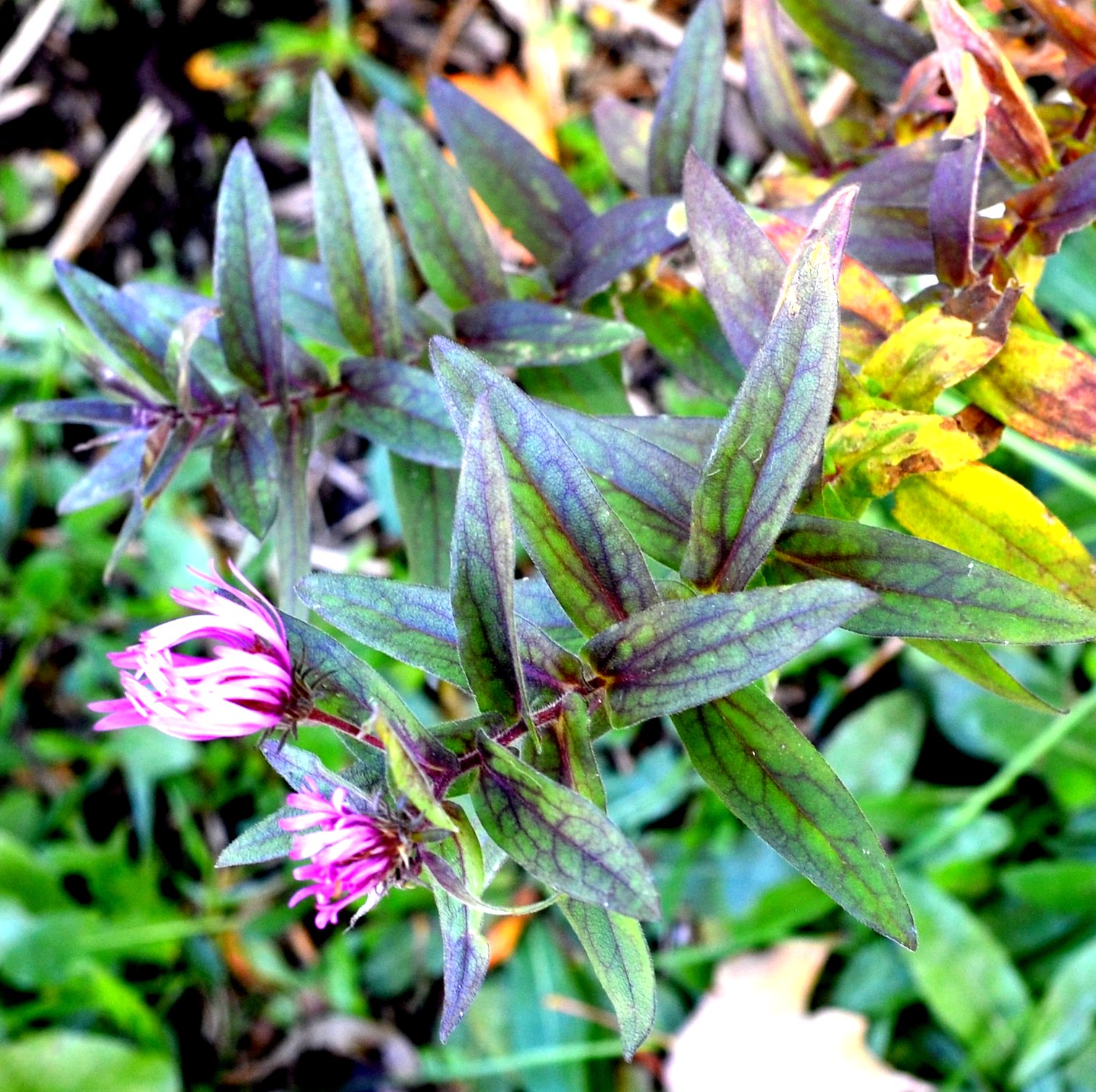
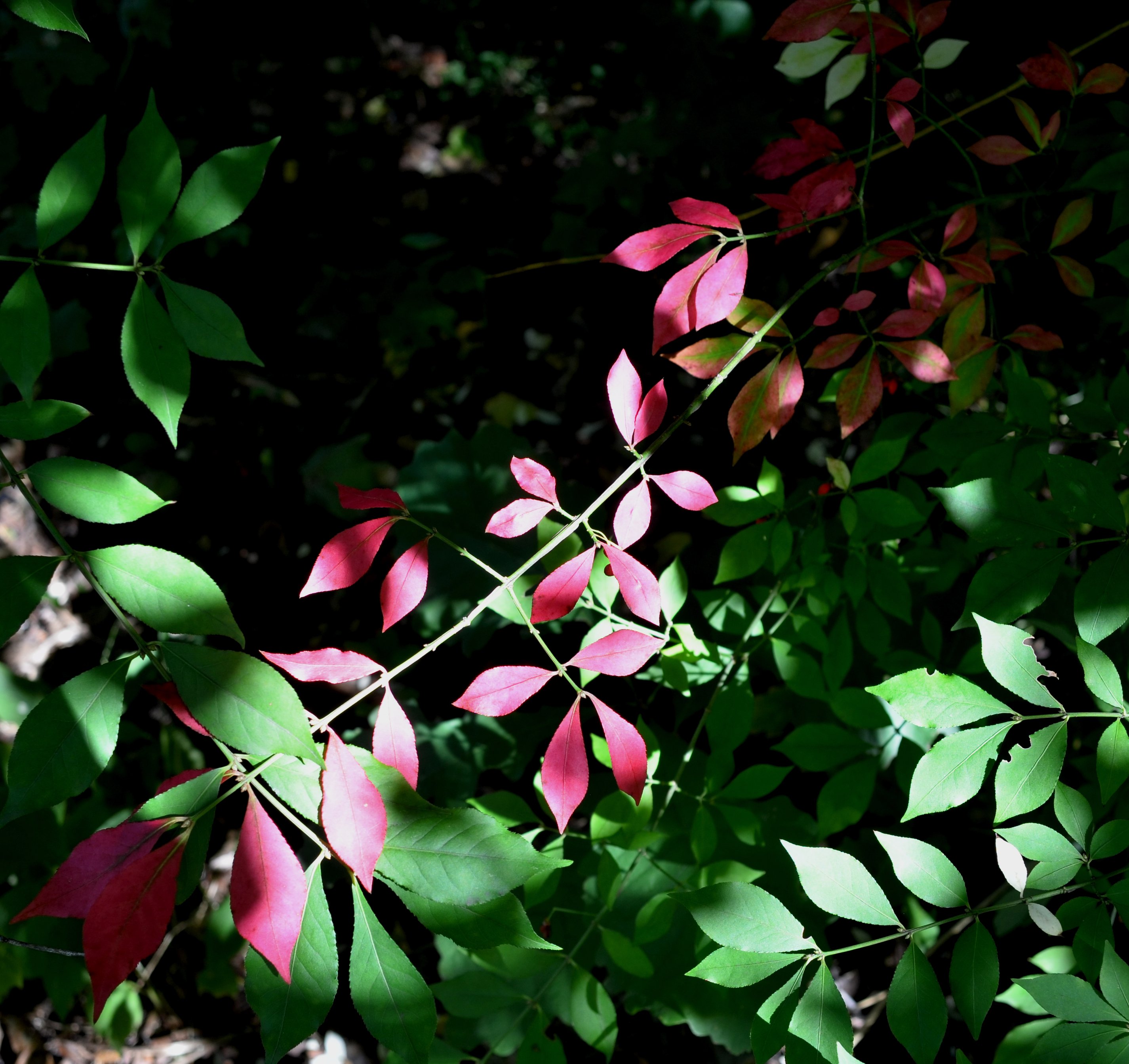
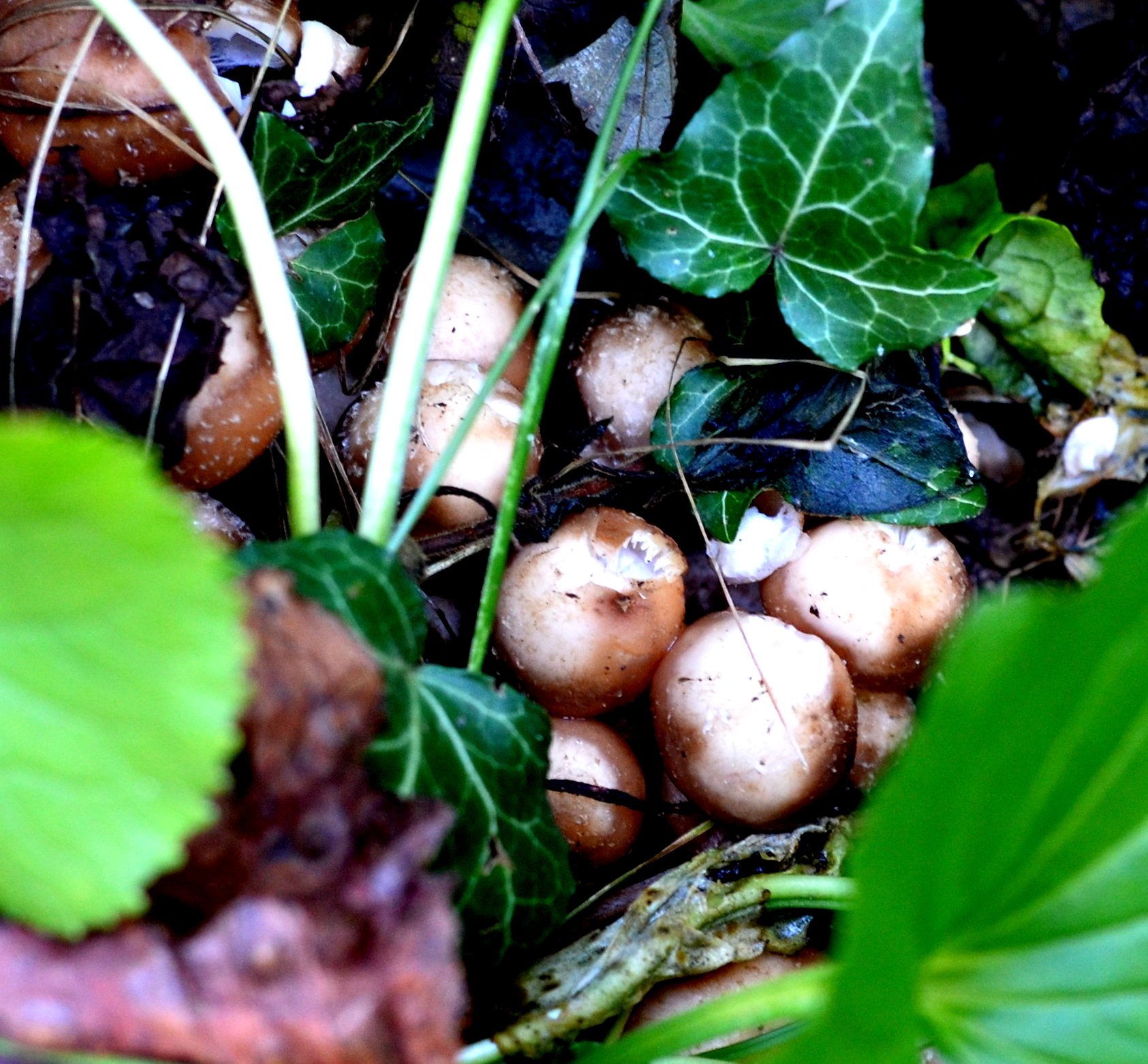
What a strange year! Early spring, vicious summer, early autumn. Yesterday morning was frosty already. It was actually pretty on top of the bright green grass. But what the heck. We survived another season and had some amazing visitors, some of which I'd never imagined we had or could have. That purplish bluish greenish goldish display of leaves on the asters almost makes up for some of the pain of watching the late rain pound the flowers into the ground. The rosish euonymus leaves are hinting at the brilliant scarlet the bushes are waiting to startle us with. And to show how the earth appreciates all that rain, there are these mushrooms underfoot in the whole weed patch. Something new and different is on its way.
Remember that there is information in the name of the file for each image. You can see it by mousing over the image - look at the lower left of the screen.
I would try clicking on the image. If the little "+" sign appears, it means you can enlarge again. While it is in "+" mode, click on something you want to see more clearly and it will zoom to that section. Then the info is displayed in the address line above. If the image has been cropped
so that clicking on it doesn't result in a larger picture, you can always hit control-plus to increase the size of the image.
The ants are also changing guard. We still have the big black ones with the red vest, but more recently we see these middle-sized red ants that seem to be made of some kind of gel. Maybe they are gummi ants. No, they are Small Honey Ants.
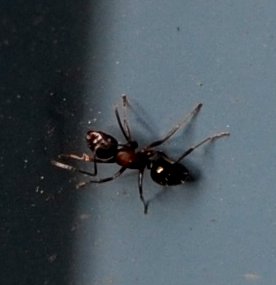 <
<
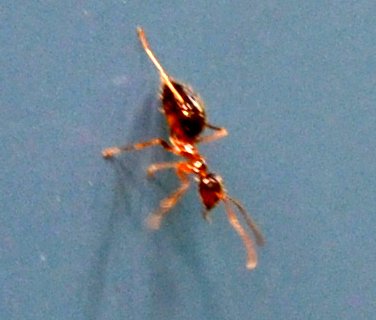
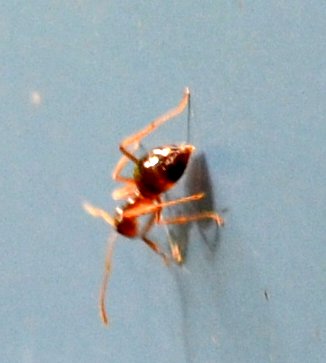 ,
,
Remember how we were wondering last week if the barklice (the official name for these bugs in spite of the fact that they aren't lice) were coming back. Yesterday the answer was YES. Right on the shop wall was this familiar barklouse, and if you stepped back you finally saw what looks like a nymph right beside it. How can a nymph change so fast from something you might have thought was a beetle into that rather elegant shiny creature? Again this new (this month) creature: Barklouse Trichadenotecnum alexanderae.
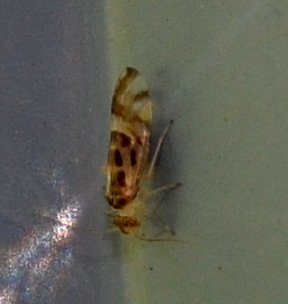
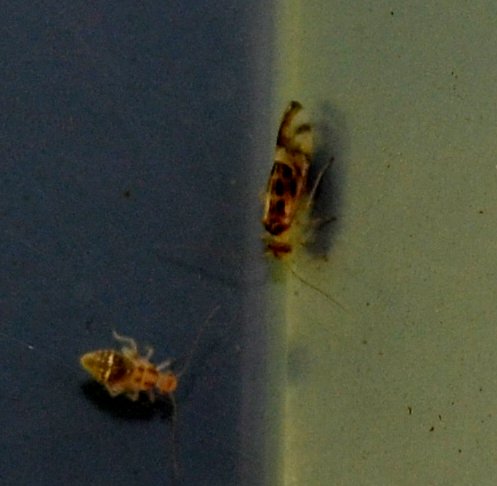
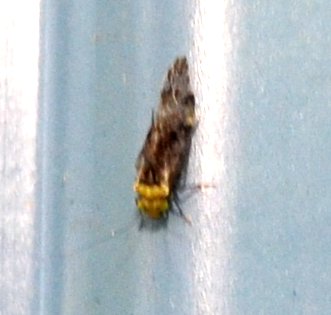
The quantity and variety of bees has also dwindled. Here is a small bumblebee still clinging to the dying aster as it had gone to sleep the night before. Finally it warmed up and found a nicer flower left. The small one enjoying a rare bit of yellow goldenrod reflected the gold underneath its body so that at first I thought this was a mason bee, but I think it is really one of those "ordinary" small bees that I haven't got the handle of YET..
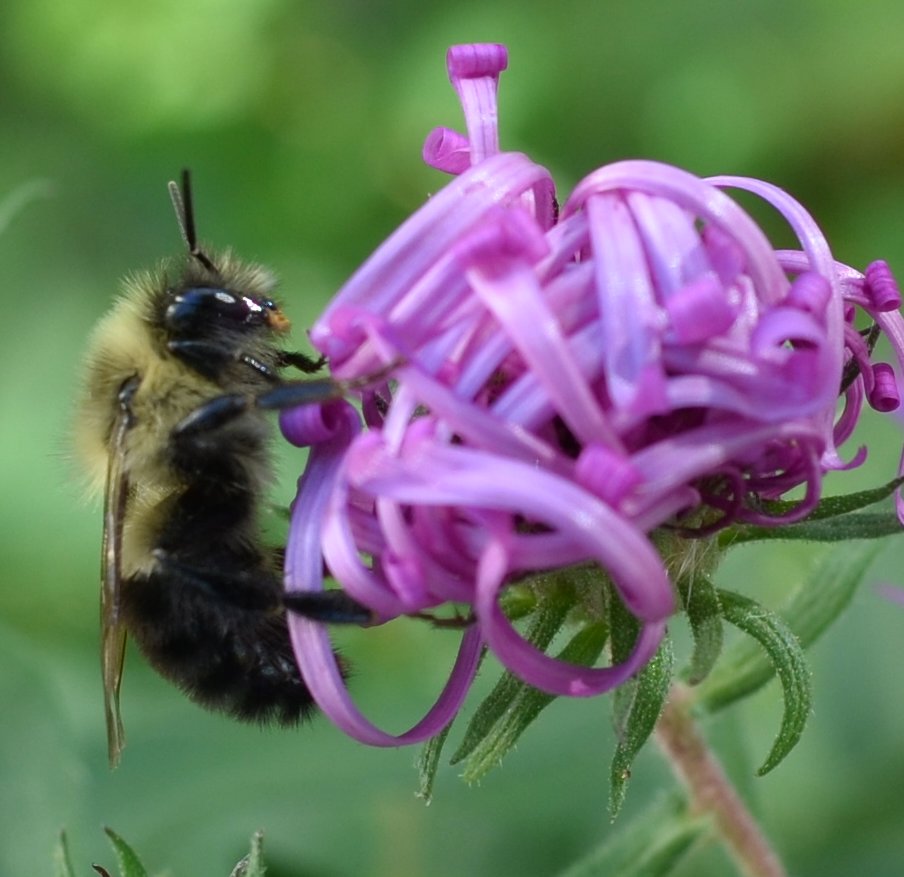

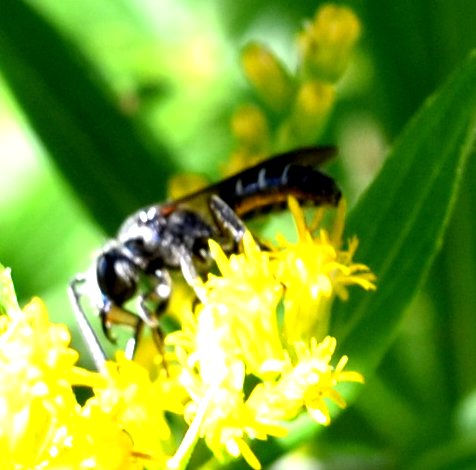
Now that the goldenrod flowers are brownish, the lady beetles show up more clearly. The asian ones really do take on hues of red to tan. In picture 3, you'll see what I saw when I was cropping - just to the left of the beetle is another insect that I'd missed when looking at the beetle! I wonder if the beetle has already sensed what would make a delightful bit of prey.
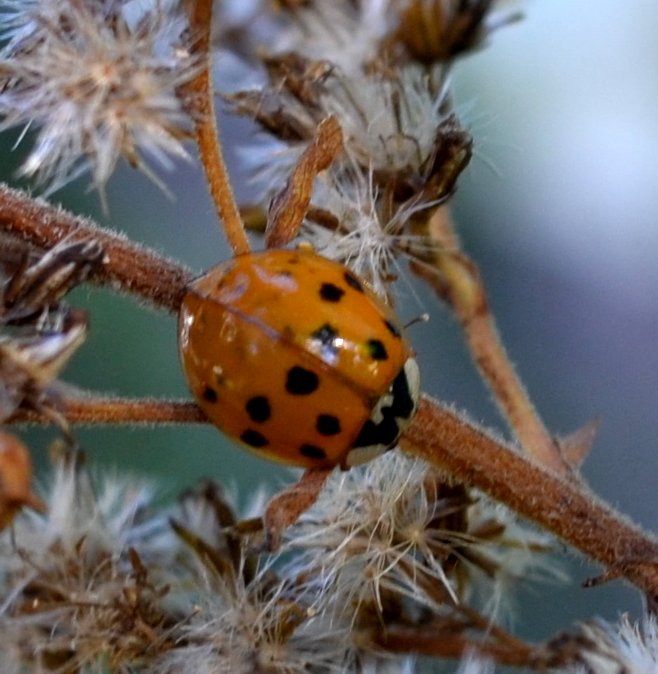
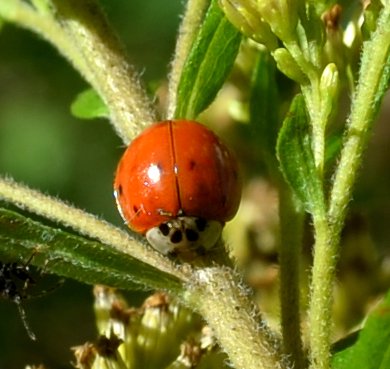
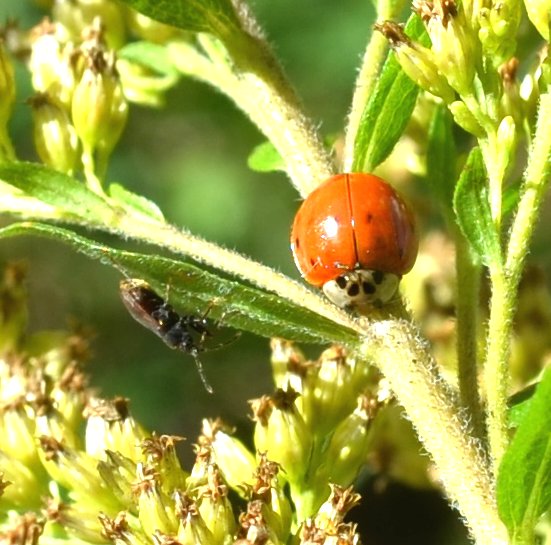
A bright olive-green lady-looking beetle decorated the place for a couple of days. The walnut sapling here has a colony of wooly-aphids. I wonder if the tiny bug in the third photo is one of the very aphids. Lately things have been camouflaged so well that many times I don't see the extra bug in the picture until I'm "developing" it.
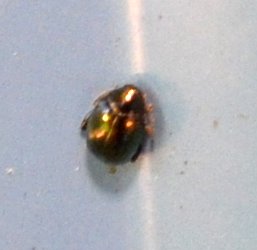

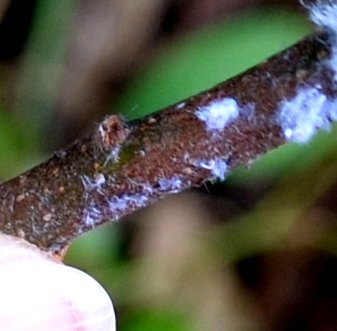
But there are still some real leafhoppers, including, of course our old pal Jikradia olitoria. And these tiny white Eratoneura that become brightly red and white when you get closer.
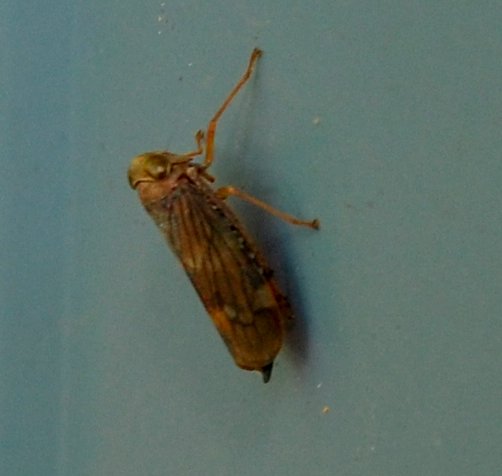
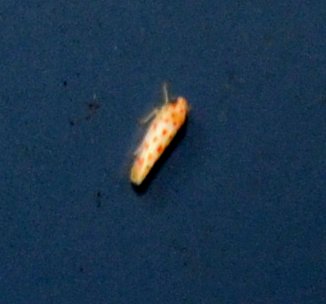
I did it again - thought this orange and black beauty was a boxelder bug. But this time it's the Large Milkweed Bug. Here's a darker colored Lygus bug. Last, here's a Twice-stabbed Stink Bug. I haven't seen one of those since 2014 at the Nature Center.
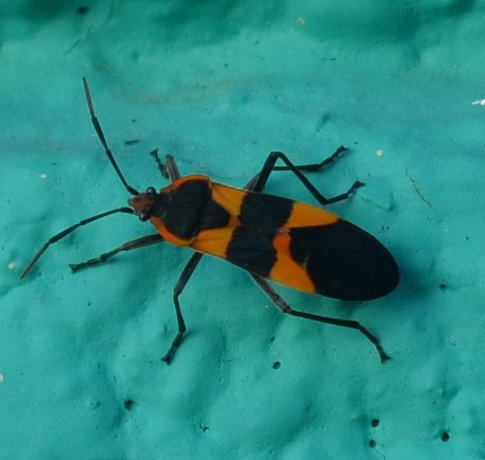
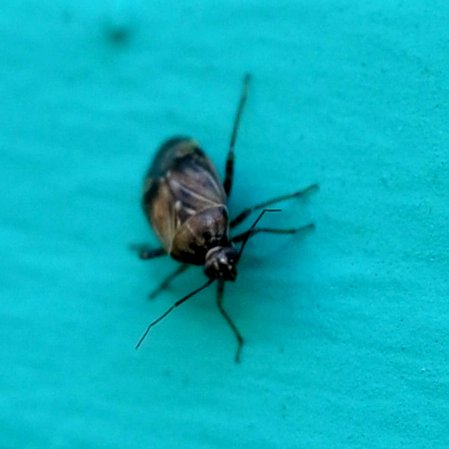
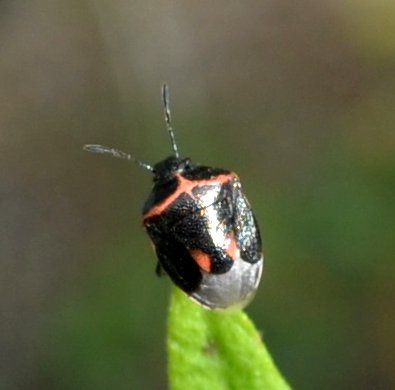
I don't know if you remember this bug from last week. The jury is still out as to what bug it is? It has fat thighs like a leatherbug but so far that's all I've been able to find out. BUT! The other day I found this one in a handful of goldenrod - is it the same bug?
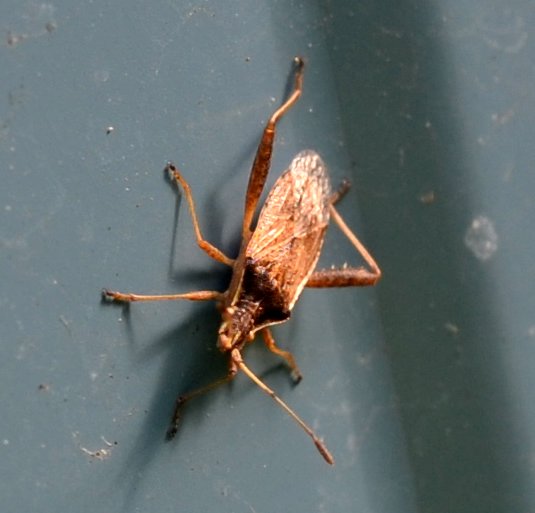
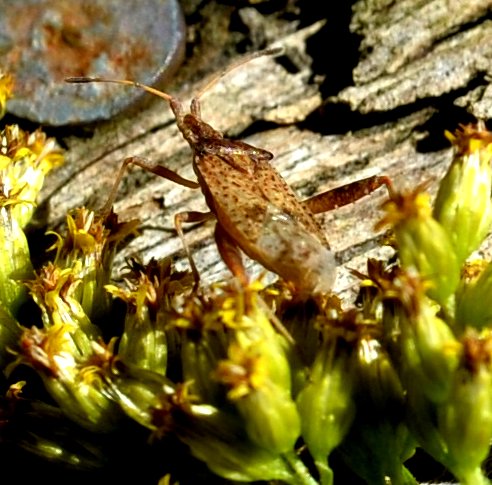
My friend Tess sent in this picture of a Western Conifer Seed Bug. About this time last year, I had a lot of those. In fact, here's a picture from April with one. (You can see the snow on the ground.) But I'm still waiting to see if they are back this fall. Here is one geometrid caterpillar. And another guest picture: Biddy in Cape Town found this dragonfly this week. Remember there is a six-month time lag between here and there.
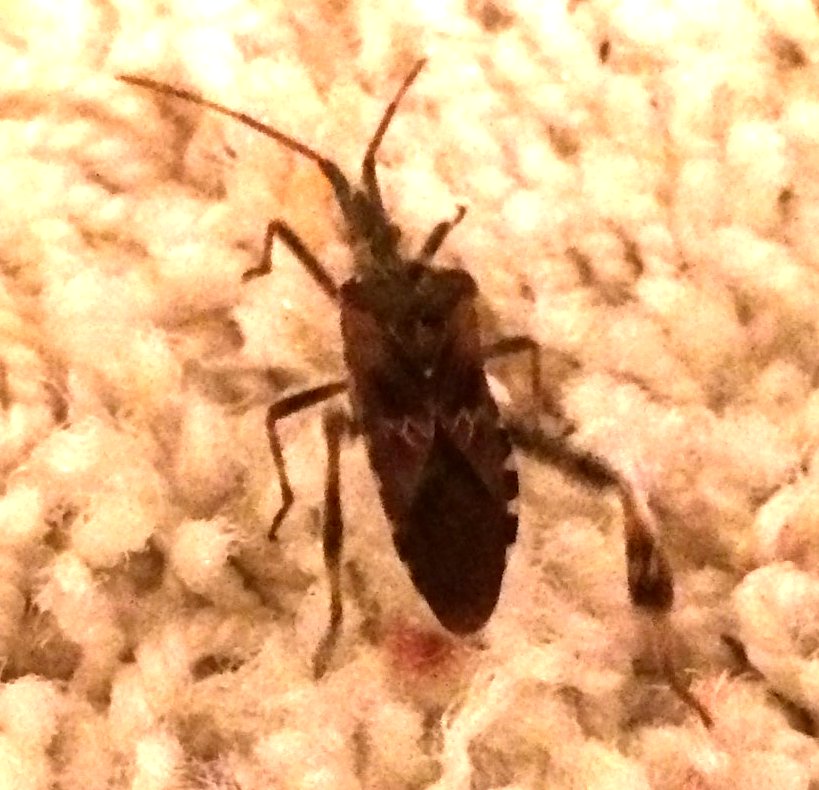
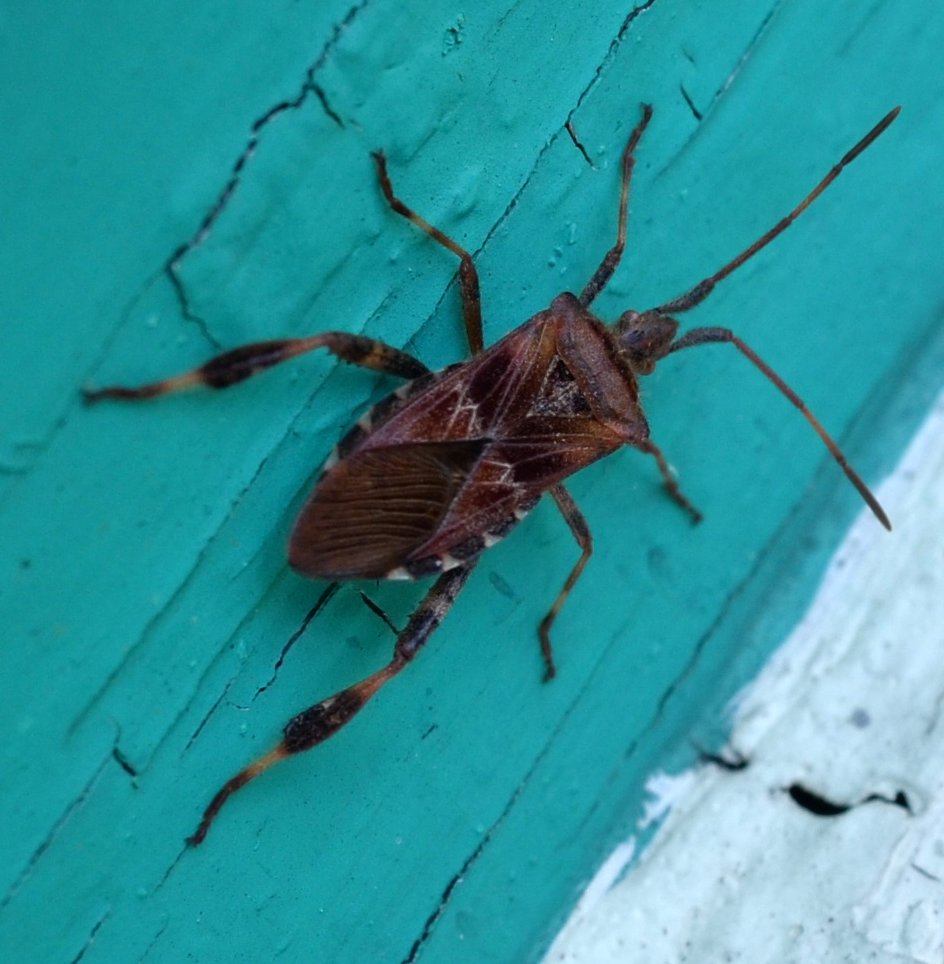
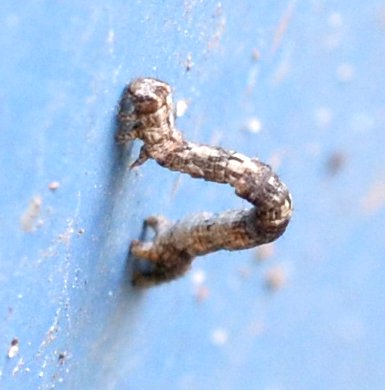
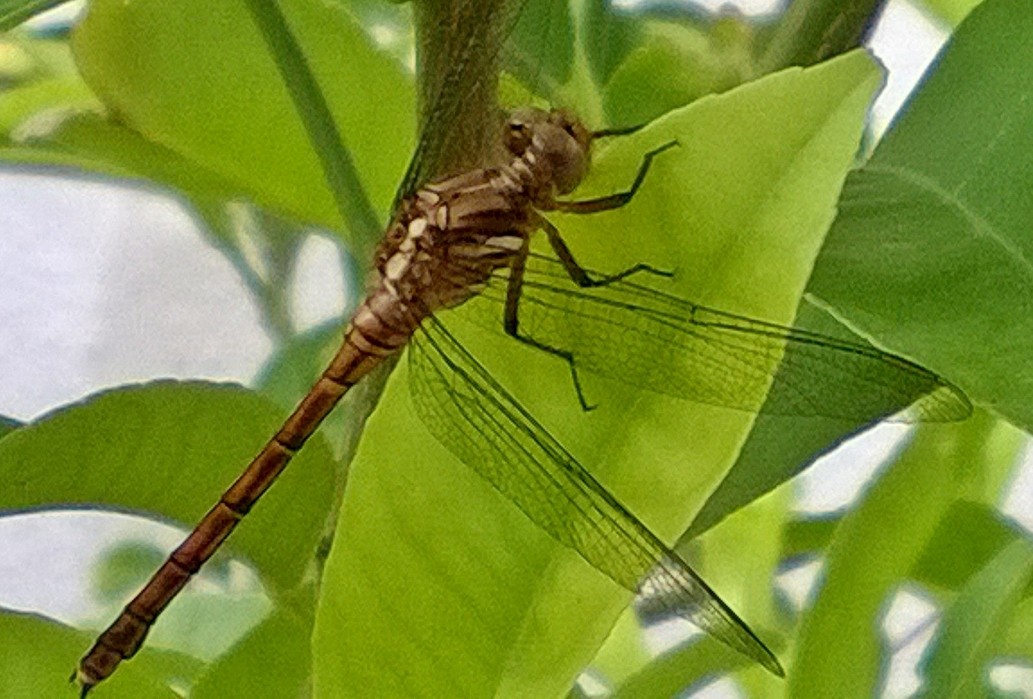
Let's take a quick break at some other signs of fall. Here is a "Christmas" cactus budding up - it usually blooms end of November. Out front, the one remaining saffron crocus is gorgeous with its blue and red and gold. And this small ornament fell from some star or other.
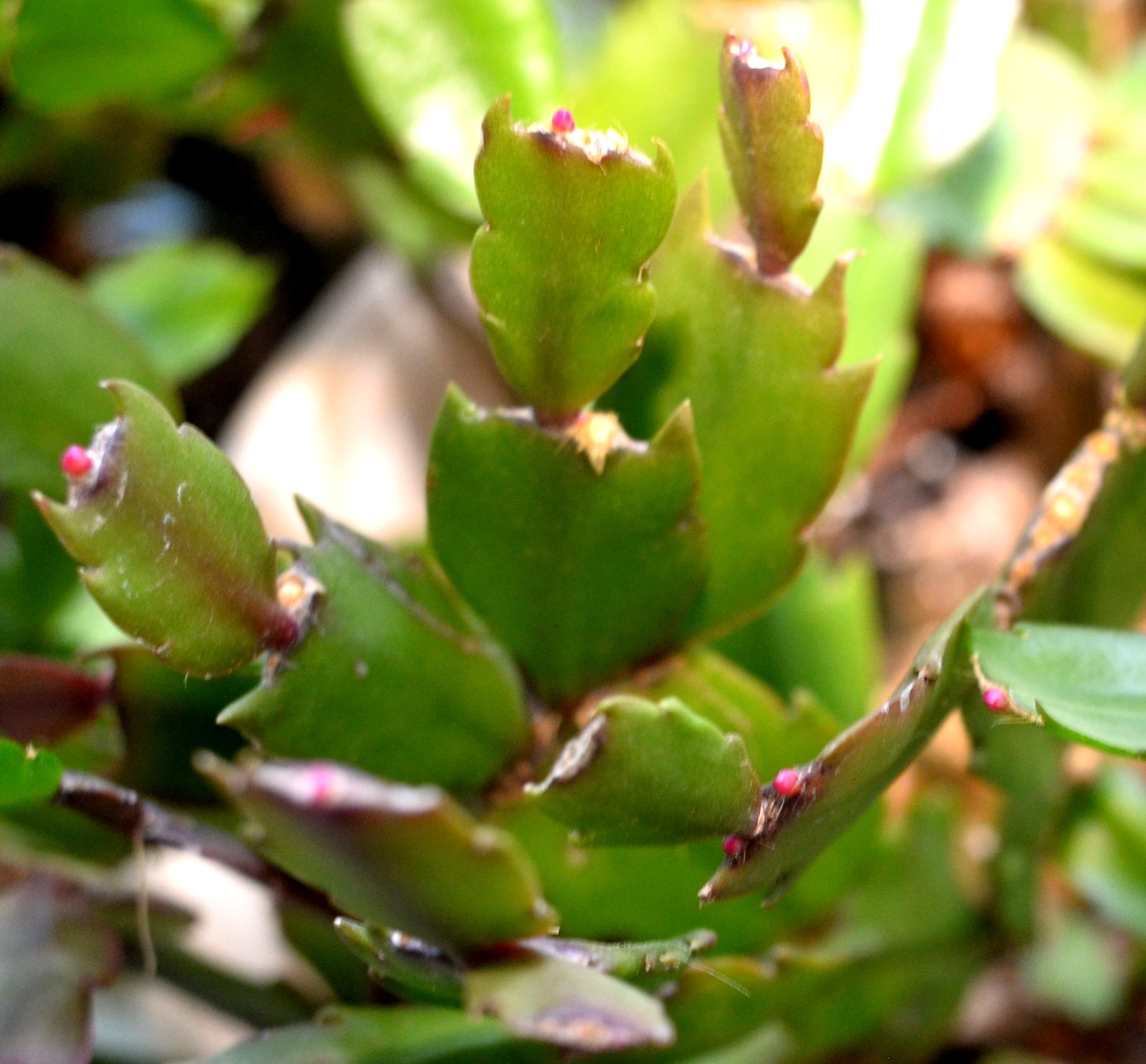
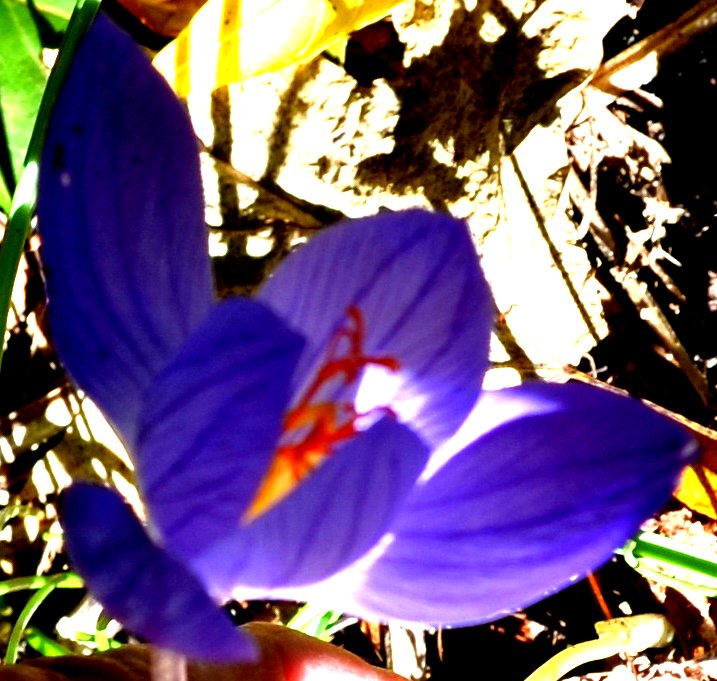
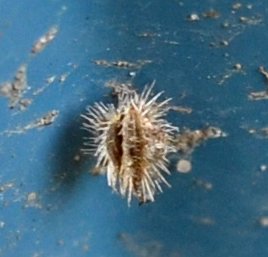
Here are the fishies - you can spot quite a few of the babies - who happen to be growing very fast! And now for the flies - first one of those orange-red ones that I can't keep straight - there are so many in its family. And one little black fly, the Smoky-winged Woodlouse Fly.
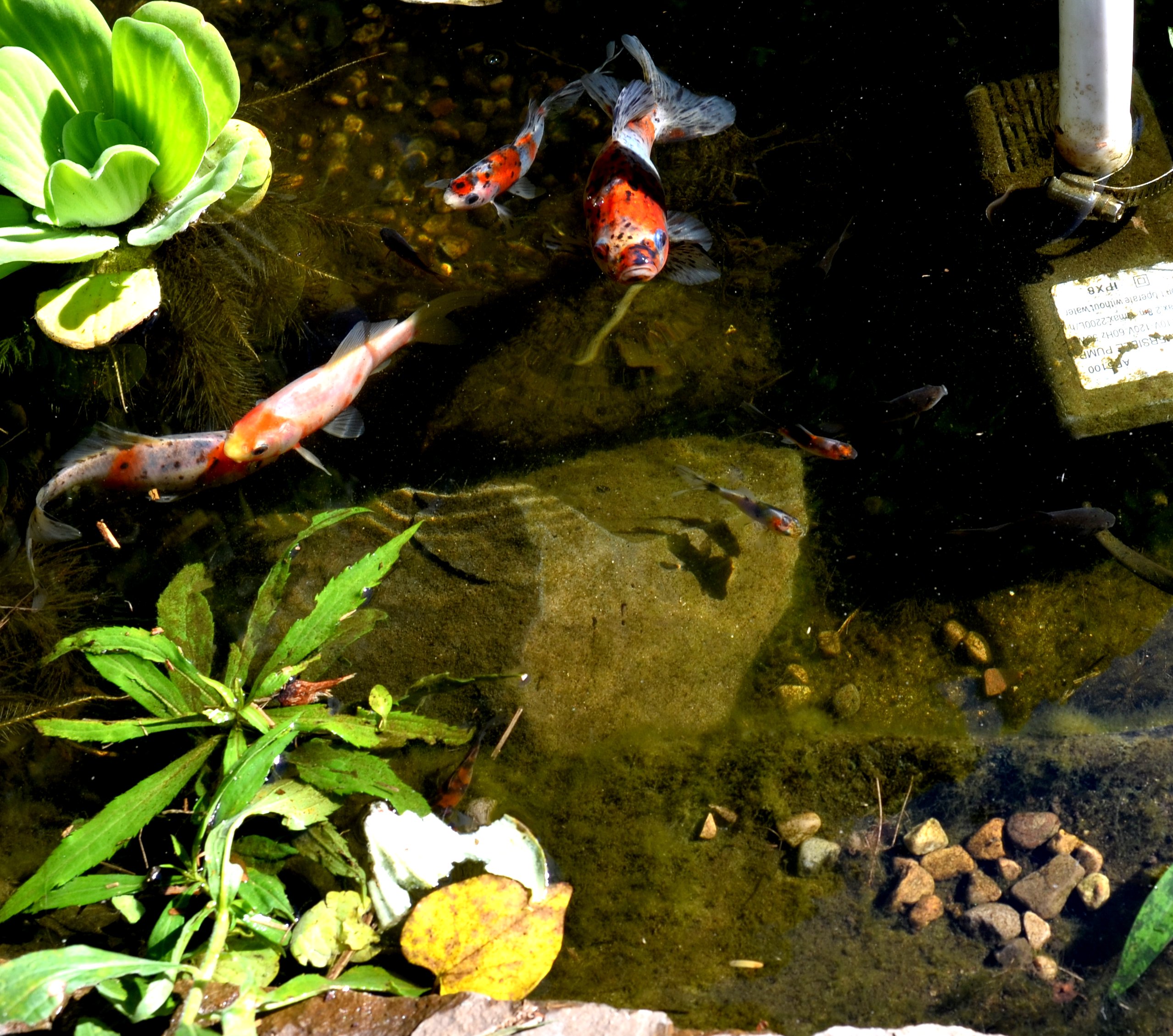
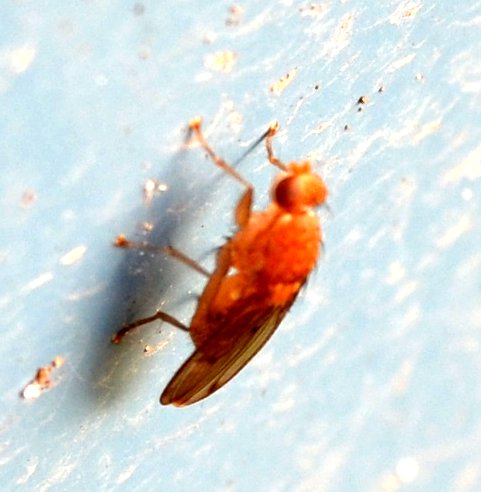
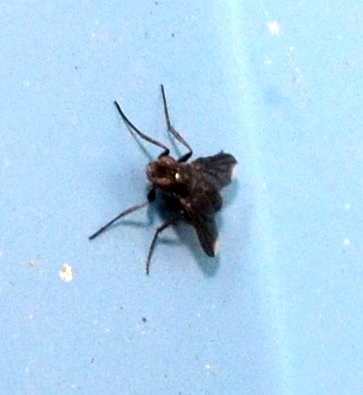
A fully armed female mosquito lies in wait - but they have stopped buzzing and biting! A crane fly looks like a huge mosquito but is totally innocent, except for its tiny prey. Isn't it stupendous how tiny their heads are? The next crane fly is one of my favorites - it looks for all the world as if someone had block-printed its wings with tiny repeated blocks. It is Limonia annulata.
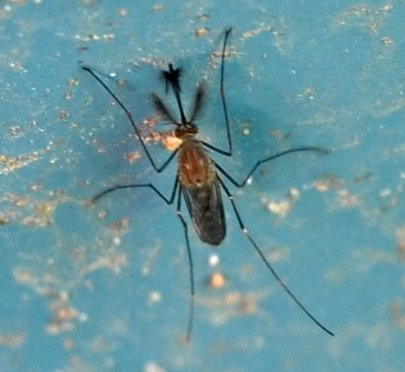
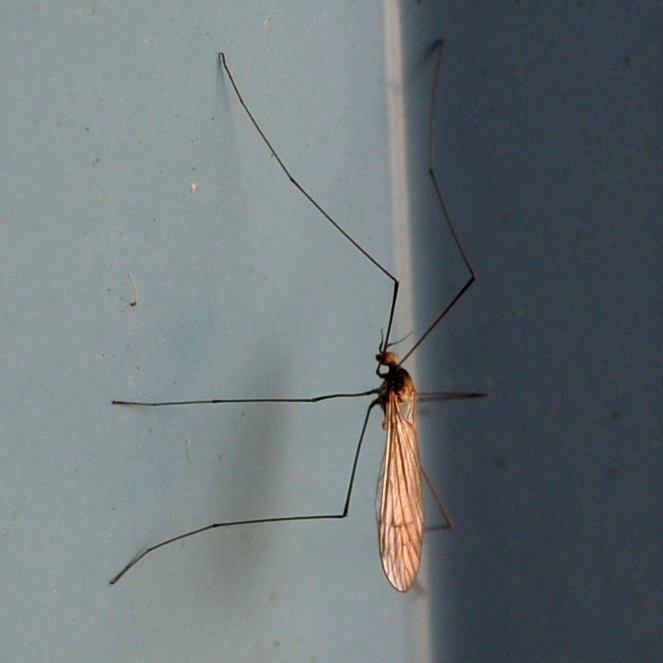
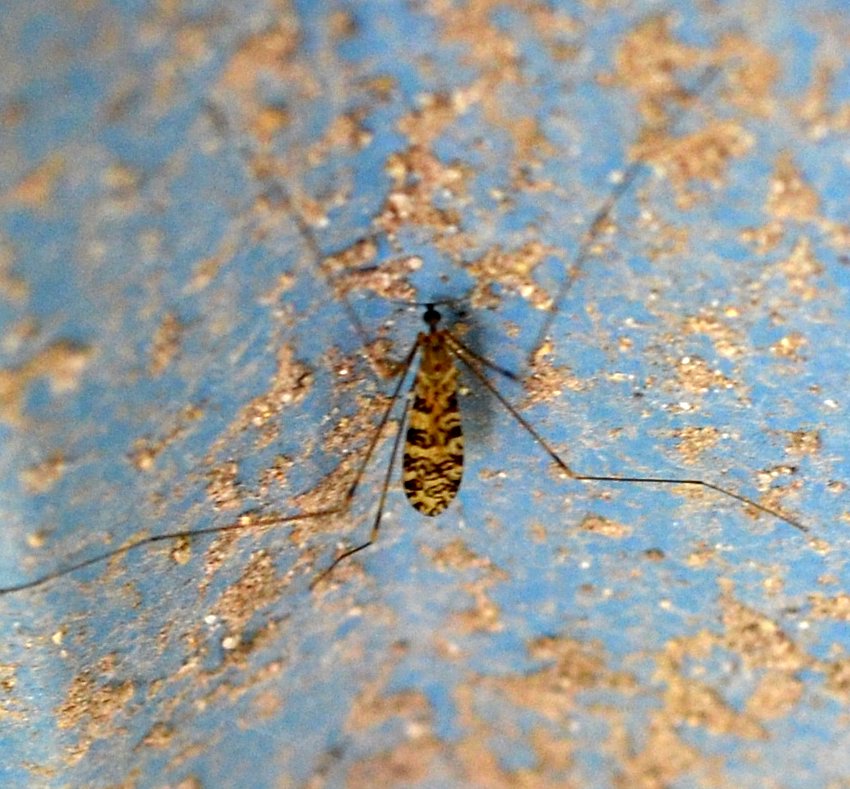
One more quaint fly! This one looks just like many others of its kind - flesh-eating flies. But this one has a strange red light at the end of its tail. Hint: its species name is haemorrhoidalis. This harvestman is back to the old pattern - I didn't see a red-bodied one once this week! Another guest shot: Tess also shared this picture of the larva of the brown lacewing. Since I haven't seen one in person this year, here's one from 2014 as it snakes its way through the goldenrod to the prize - the red goldenrod aphid! Note: Tess found her baby lacewing on 10/12 this year and the one from 2014 was on 10/5! So the years haven't spun too far yet off their timing....
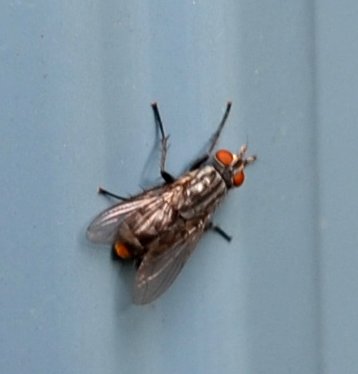
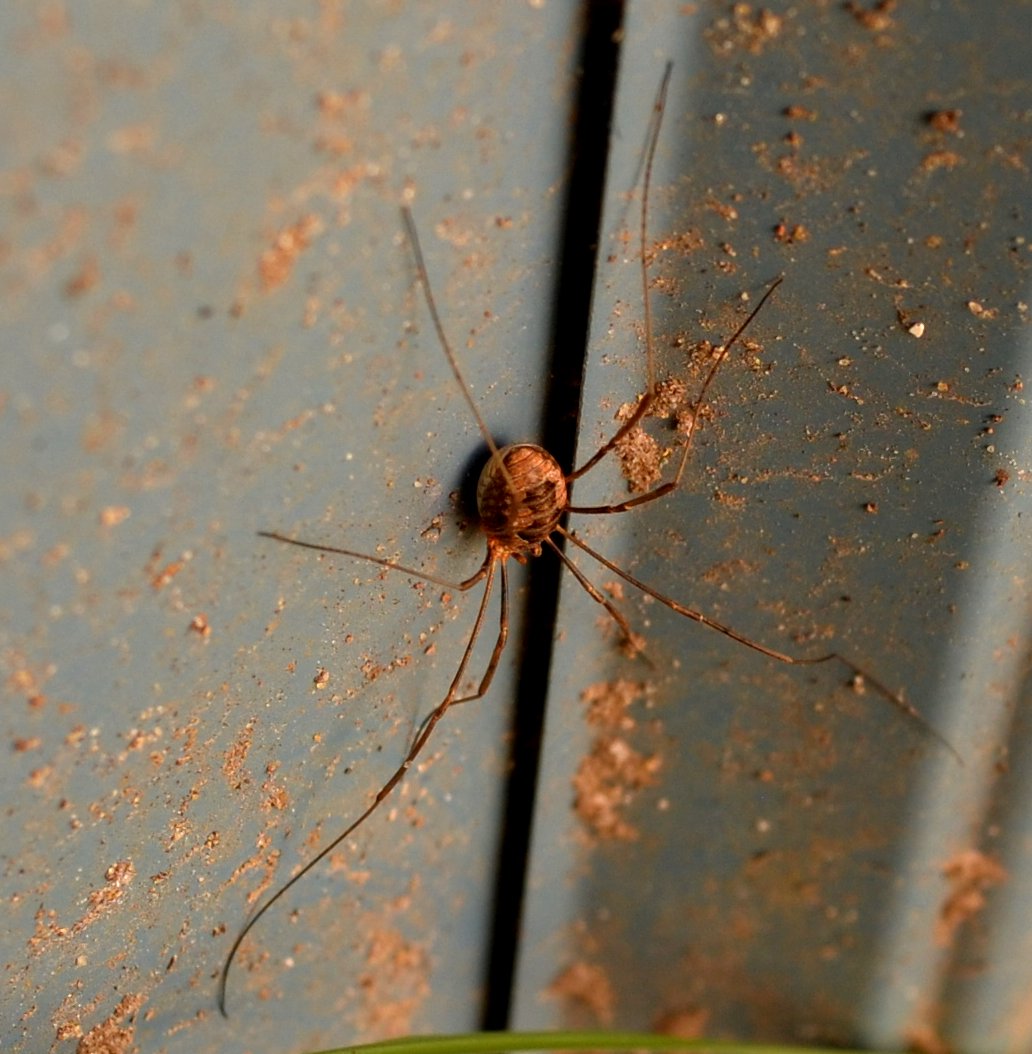
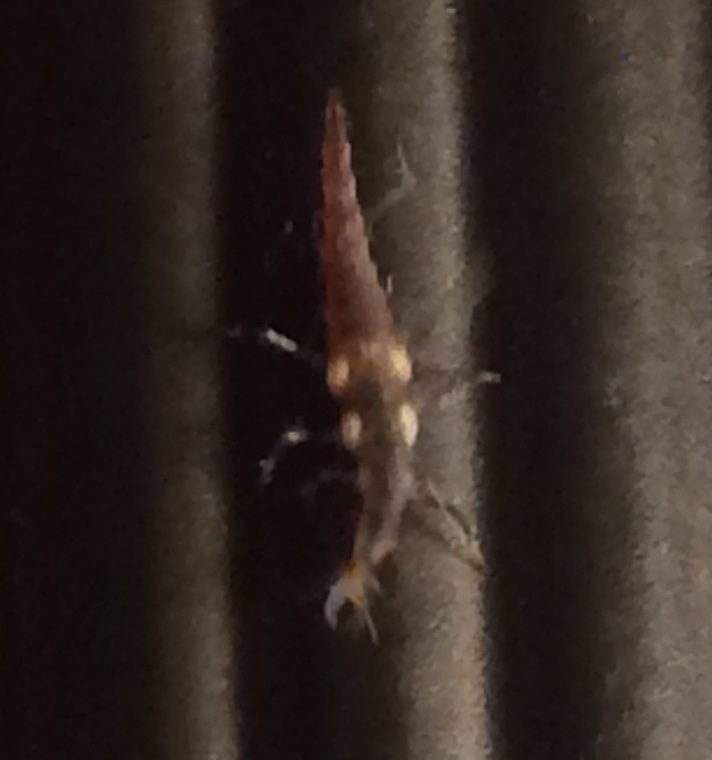
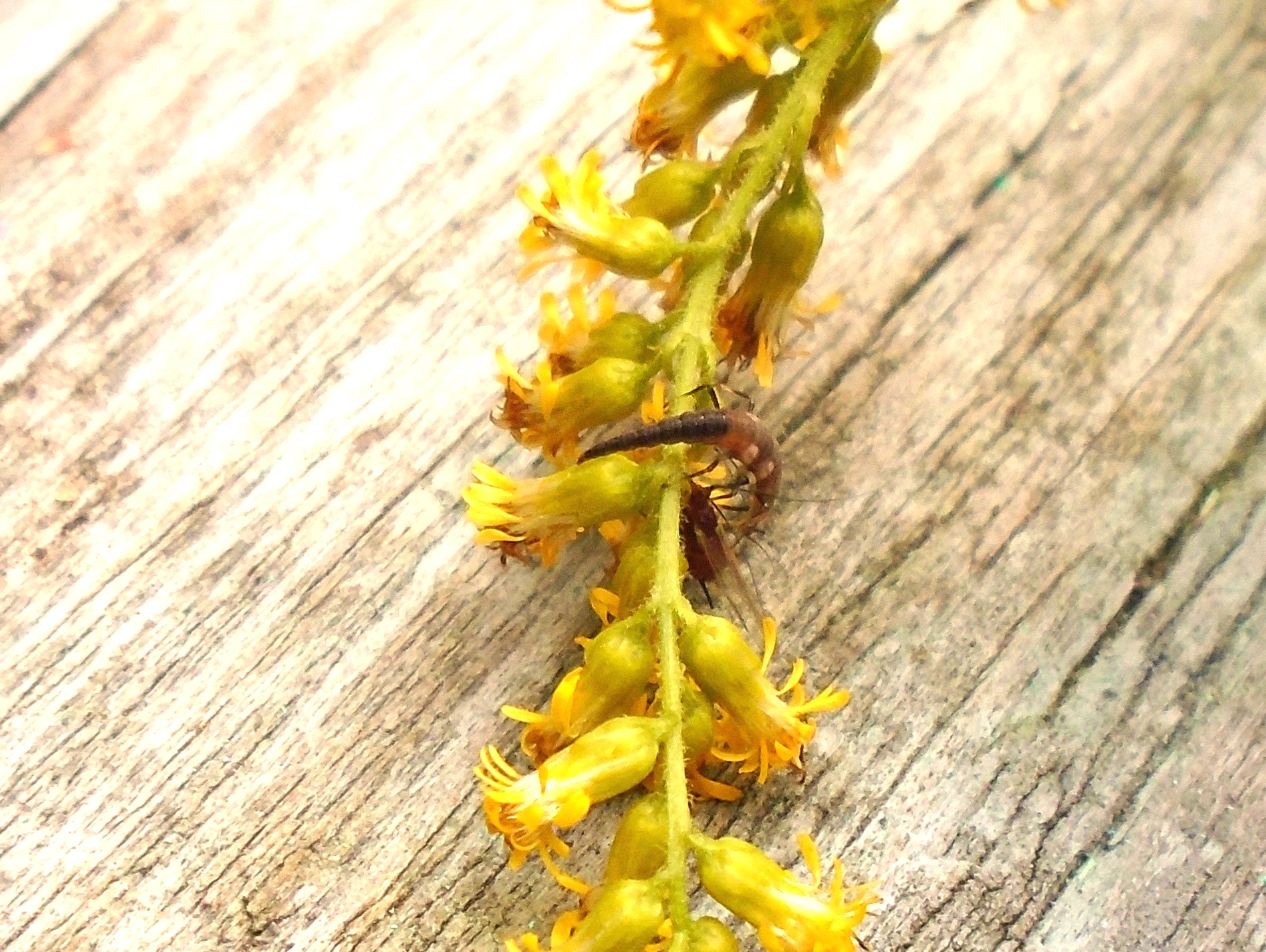
Some puzzles: this first picture: snail? or beetle? or polished rock? Some tiny debris caught in a spider's web. The first one you can see the resemblance between the original and the shadow. What about the second shot?
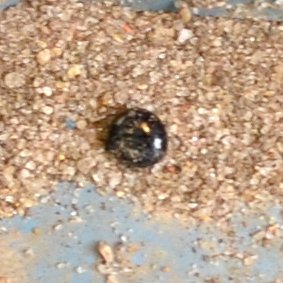
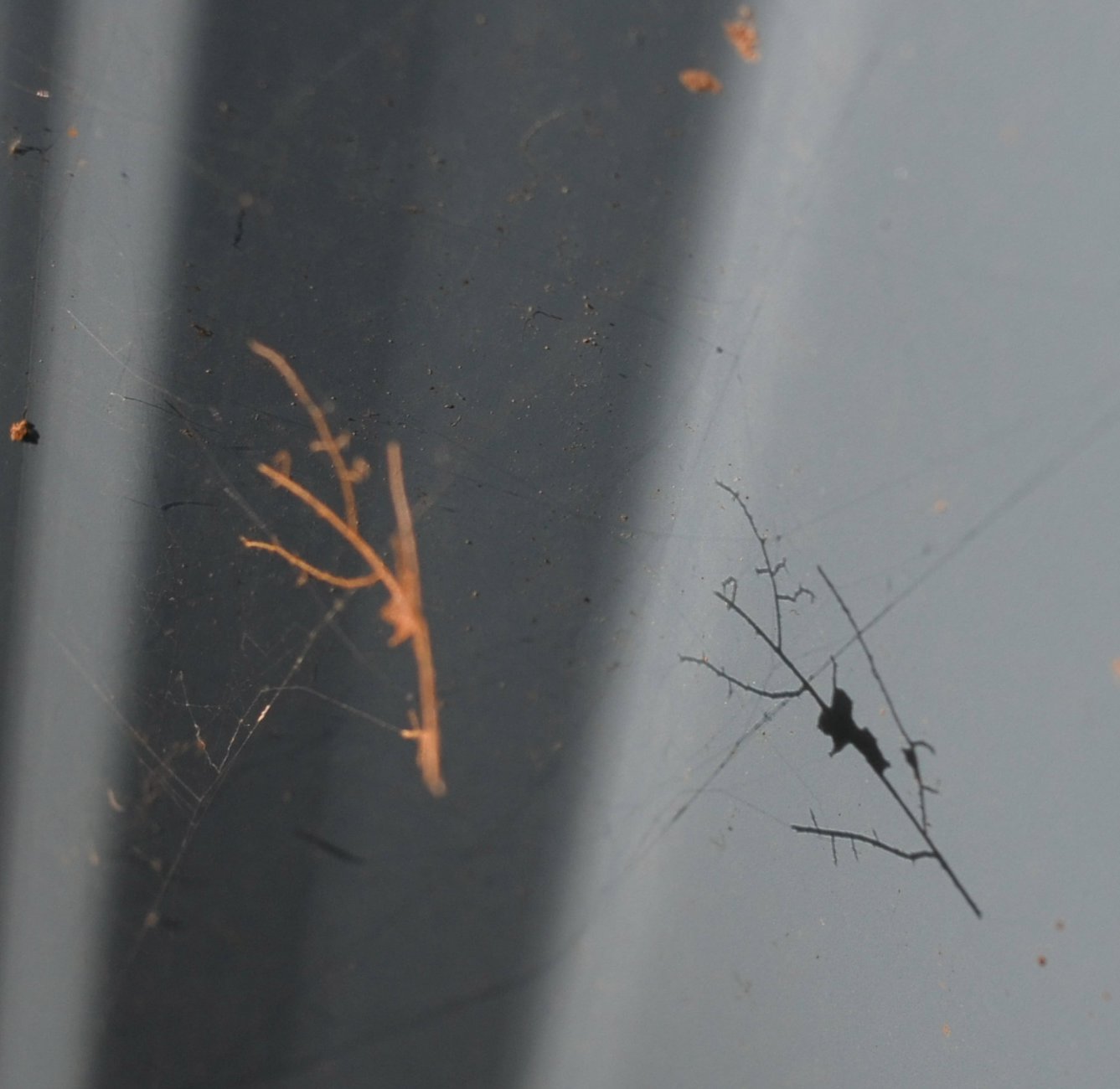
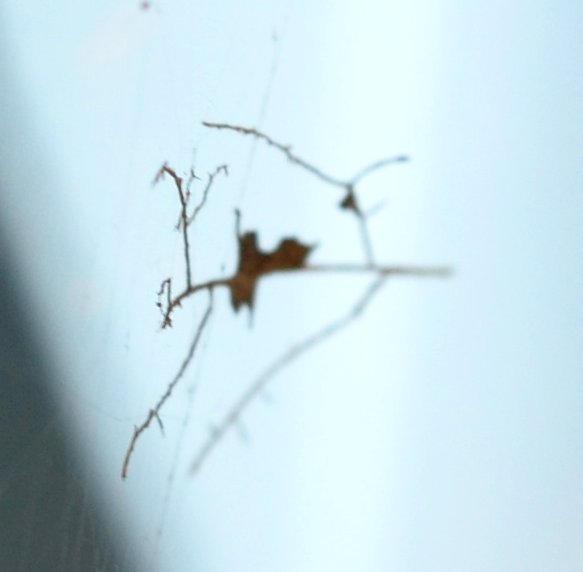
Another sly move on the part of the common house spider, first the more usual view, then the one that looks as if Mr. Potatohead is staring at us. Then comes a ghost spider trying to hide in the goldenrod.
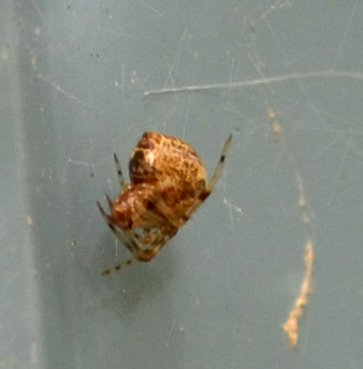
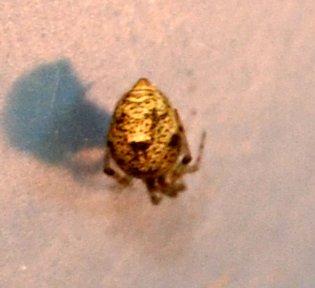
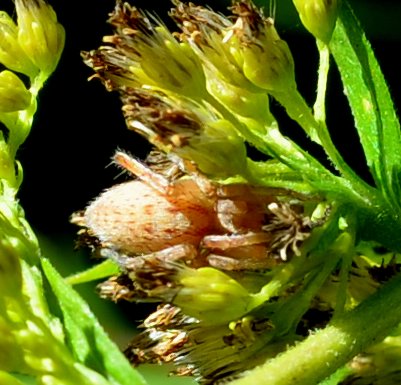
Yet another grass spider has just laid her egg mass in a warm silk crib. This beautiful spider is a new one to this part of the world (my yard). Bugguide suggests some species of the genus Pityohyphantes, in other words, one of the Hammock Spiders. What is this familiar-looking spider with a big bull's eye on its abdomen?
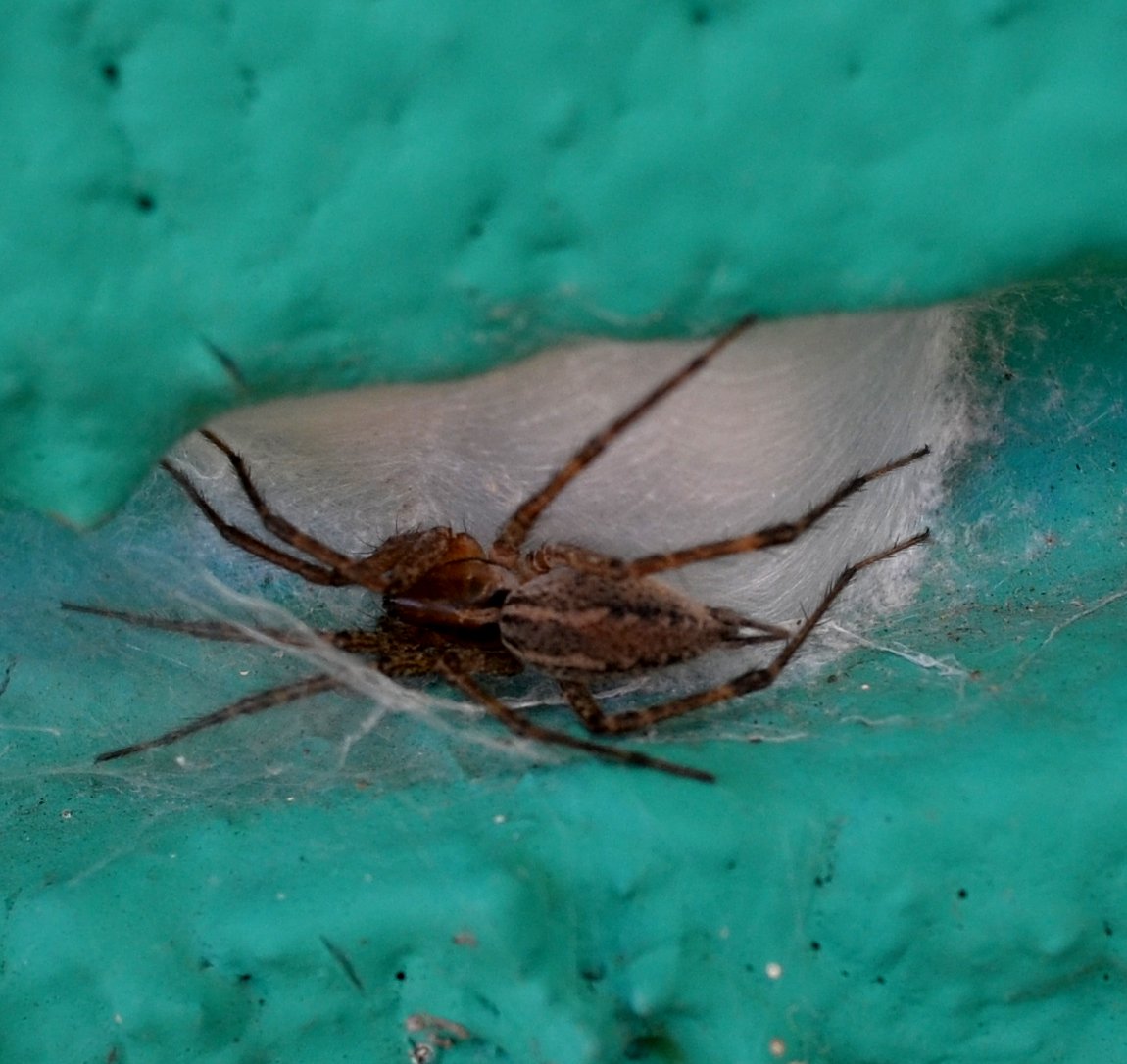
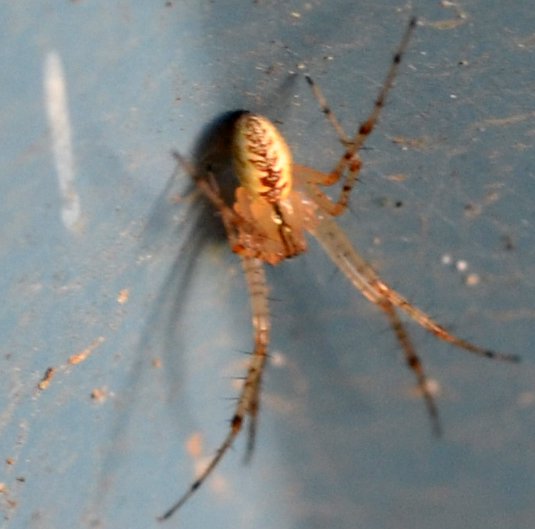
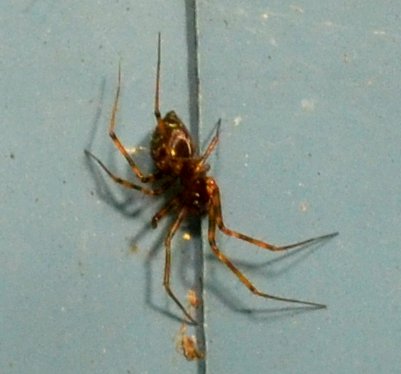
Next is a spider with an abdomen that looks as if had sat in the bath for too long. It resembles the attractive puckering of a Rex Cat. And here are two little Northern Crab Spiders, one running off into the remains of an aster flower, and the other racing towards us on an oak leaf. Gutsy, isn't he? I say "he" because he is sporting a pair of boxing gloves for pedipalps.
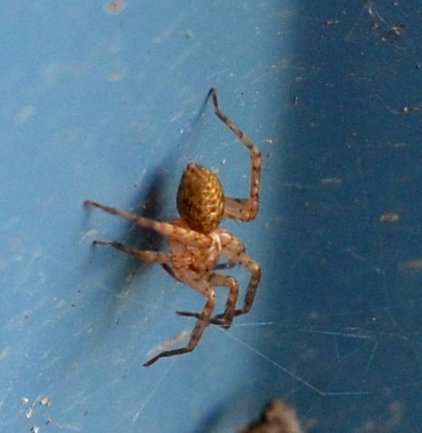

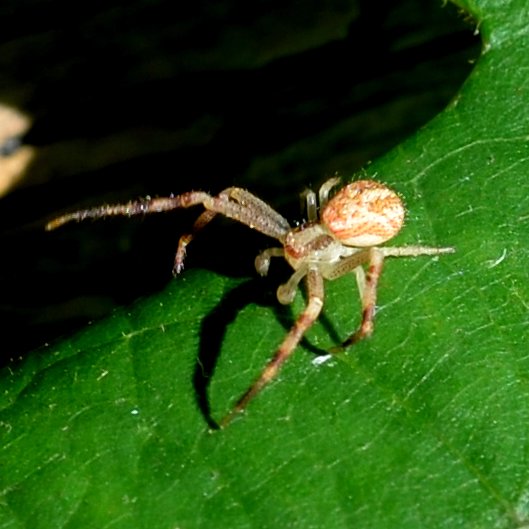
Here is the only one of the Potter Wasps I spied this week. It resembled while flying Eumenes fraternus, but something's not right. For one thing, while in flight it looked jet black with yellow markings. This one seems more chocolatey. Here's another view. Oh dear, I must admit that's about all the wildlife I could find this week. But how about a few more florals? Here are some of the last of the asters.
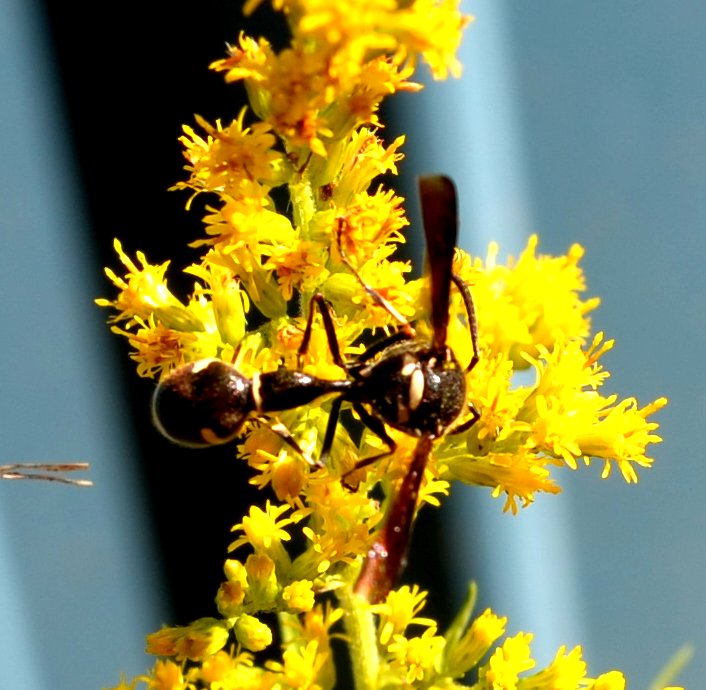
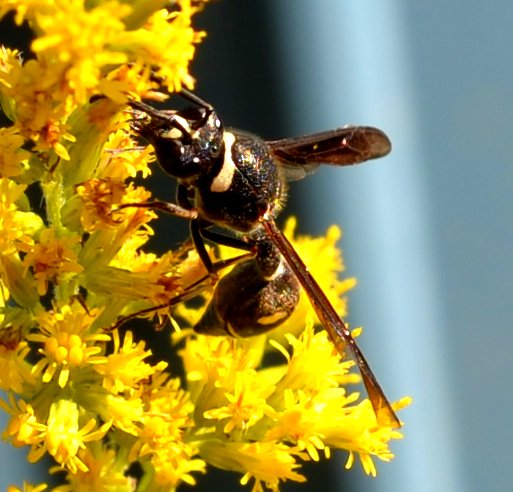
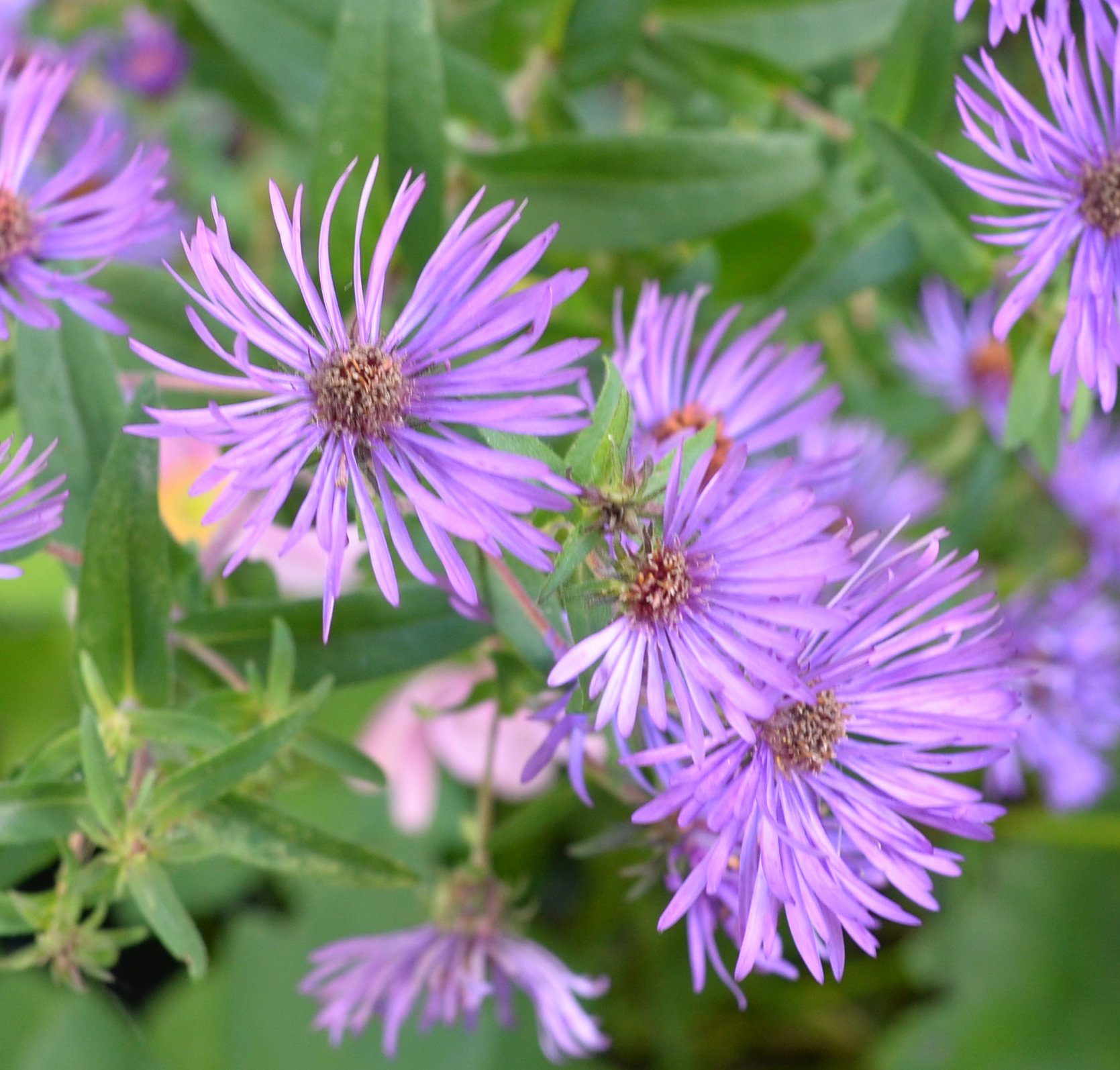
Here is a fern I have been trying to identify without much (any) luck. It grows much better in the shade of my neighbor's house, but this is one that I've been trying to naturalize into the front flower bed. That spray of mint leaves is down to its last stand (as far as I can tell) - but I love the color! I also love the vibrant yellow of this Common Tall Primrose flower. There are but one or two buds left!
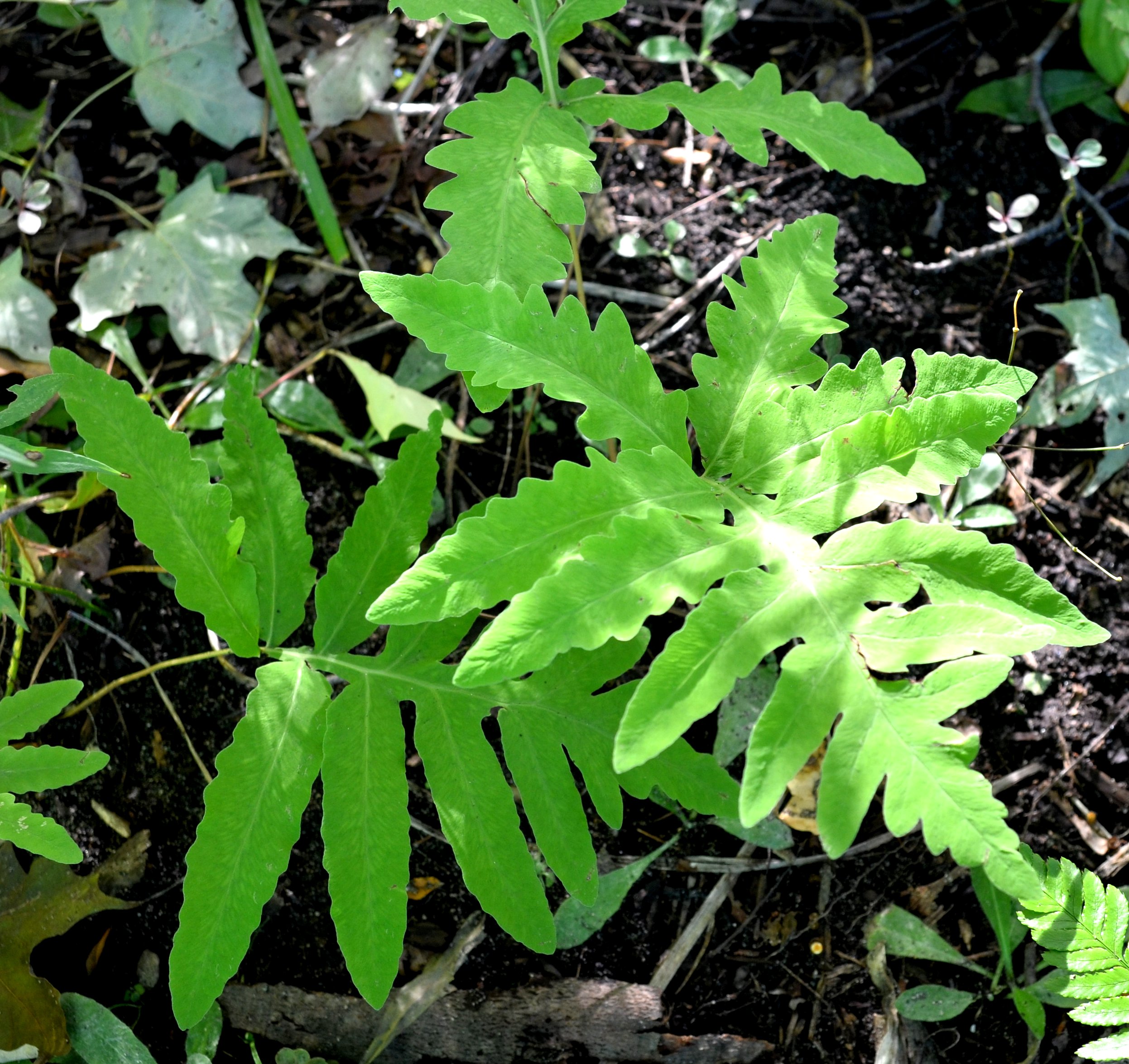

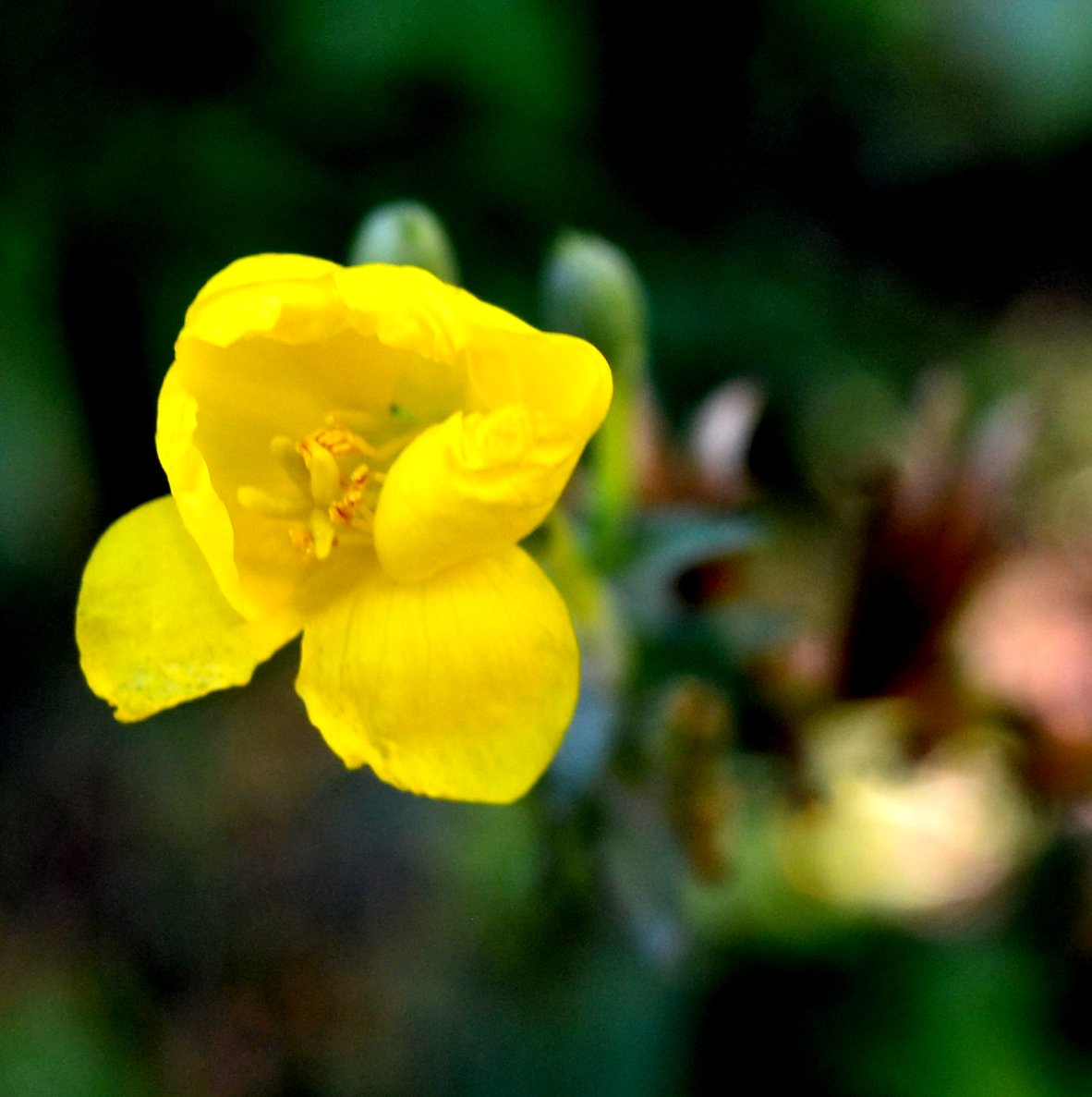
So we are winding down to an ever-falling amount of busy insects and spiders. But remember last year, when we put out a blog about once in two weeks - As long as there is anything out there to photograph, I'll be making at least short walkarounds until I'm snowed under! Keep watching this spot!
Love, Martha
Back to October 9
On to October 23
Back to 2016 menu
Back to main menu
copyright Martha O'Kennon 2016






 <
<























































